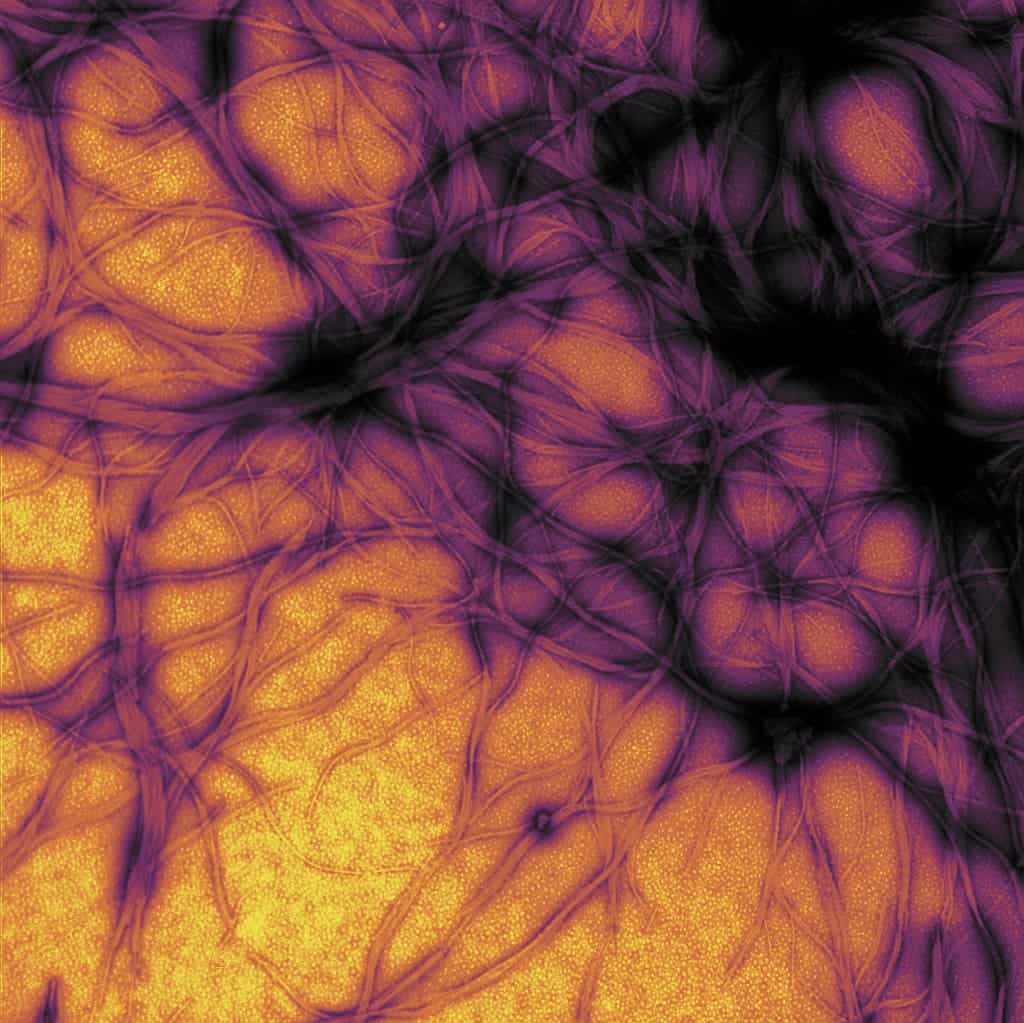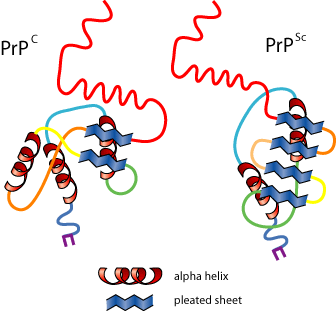In a new study published August 31 in Proceedings of the National Academy of Sciences, researchers claim to have discovered a new type of prion – the first one after 50 years. Their work strengthens the idea that degenerative diseases are caused by prions.

Jensflorian/Wikimedia Commons, CC BY-SA 3.0
Prions are misfolded proteins that multiply themselves by causing other proteins to misfold. It is this form of replication that leads to disease that is similar to viral infection. However, a protein as an infectious agent stands in contrast to all other known infectious agents, like viruses, bacteria, fungi, or parasites—all of which contain nucleic acids (either DNA, RNA, or both). Therefore prions are not considered living organisms – but that doesn’t mean they’re not scary.
Prions are actually extremely scary – they are basically untreatable and generally fatal. While the incubation period for prion diseases is relatively long (5 to 20 years), once symptoms appear the disease progresses rapidly, leading to brain damage and death. However, in recent years, some hope has emerged. Antiprion antibodies capable of crossing the blood-brain-barrier and targeting cytosolic prion protein (an otherwise major obstacle in prion therapeutics) have been described and in the last decade, some progress dealing with ultra-high-pressure inactivation of prion infectivity in processed meat has been reported. In 2011 it was discovered that prions could be degraded by lichens – though no lichen treatment has yet emerged.
It wasn’t until 1982, that Stanley Prusiner coined the term prion (for “proteinaceous infectious particle”) to describe the self-propagating protein responsible. Prusiner and his team showed that prions can cause a myriad of diseases and conditions, and suspicion emerged that many degenerative diseases are caused by prions. In 2013 a team in Prusiner’s lab, including neuroscientist Kurt Giles, were trying to transmit Parkinson’s disease to mice genetically engineered to produce a human protein involved in Parkinson’s. Ironically, they failed – but in the process, they found the process works mice with MSA (Multiple system atrophy – a progressive neurological disorder).
“The controls were the ones that worked,” Giles says. “So we got lots more samples.” For the new study, the team obtained 12 more MSA samples from three brain banks in London, Boston and Sydney.
Presumably, whatever makes MSA happen also makes proteins more likely to misfold, and this might apply for several types of prions. Some prions took longer to develop than others:
“The time it took to get disease when we used the spontaneously sick animals was very different,” Giles says. “That’s clear evidence these are two different strains of prion.” The fact that Parkinson’s didn’t transmit suggests that if alpha-synuclein prions are involved in Parkinson’s, they are a different strain again to those causing MSA.
Much evidence now supports the idea that many neurodegenerative diseases share this core mechanism of self-propagating proteins that accumulate and ultimately kill cells, so it makes sense to suspect that prions lie at the bottom of things, but this also leads to another challenge: define when proteins actually become prions.
“I think Prusiner’s concept is valid—it’s just important to be a bit careful about what you call a prion,” says Lary Walker, a neuroscientist at Emory University who was not involved with the study. “All these other diseases arise spontaneously within the brain; there’s no evidence they’re infectious by any standard definition of the word.”
Either way, the fact that they manage to discover a new type of prion (50 years from the discovery of the next one) is remarkable – and who knows, maybe one day, we’ll find that this is the missing puzzle piece from understanding degenerative diseases.





